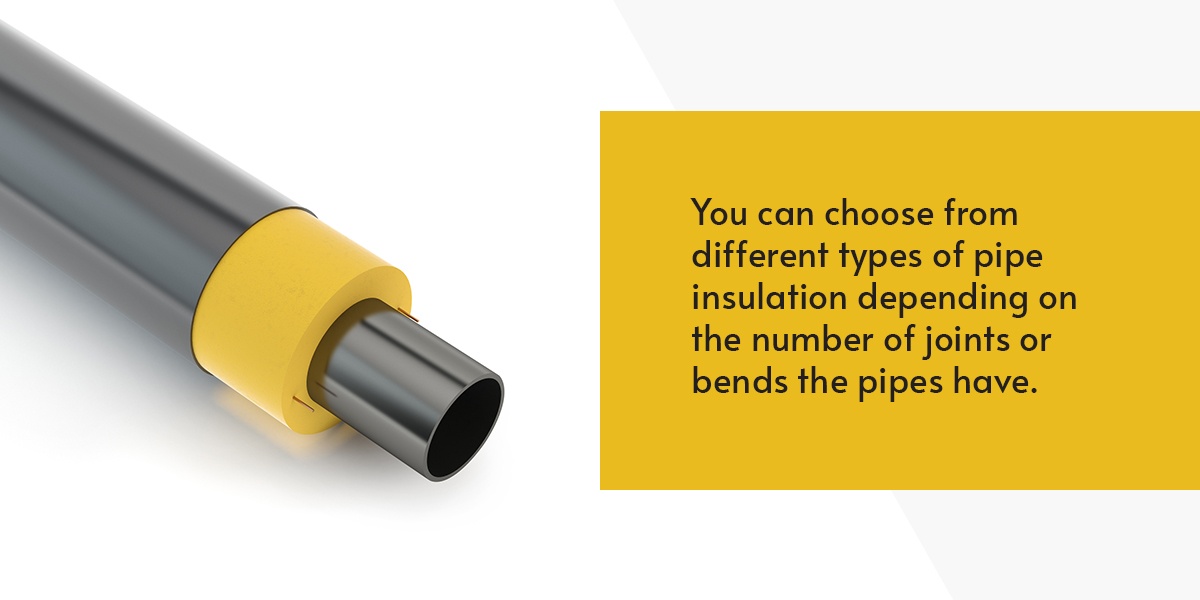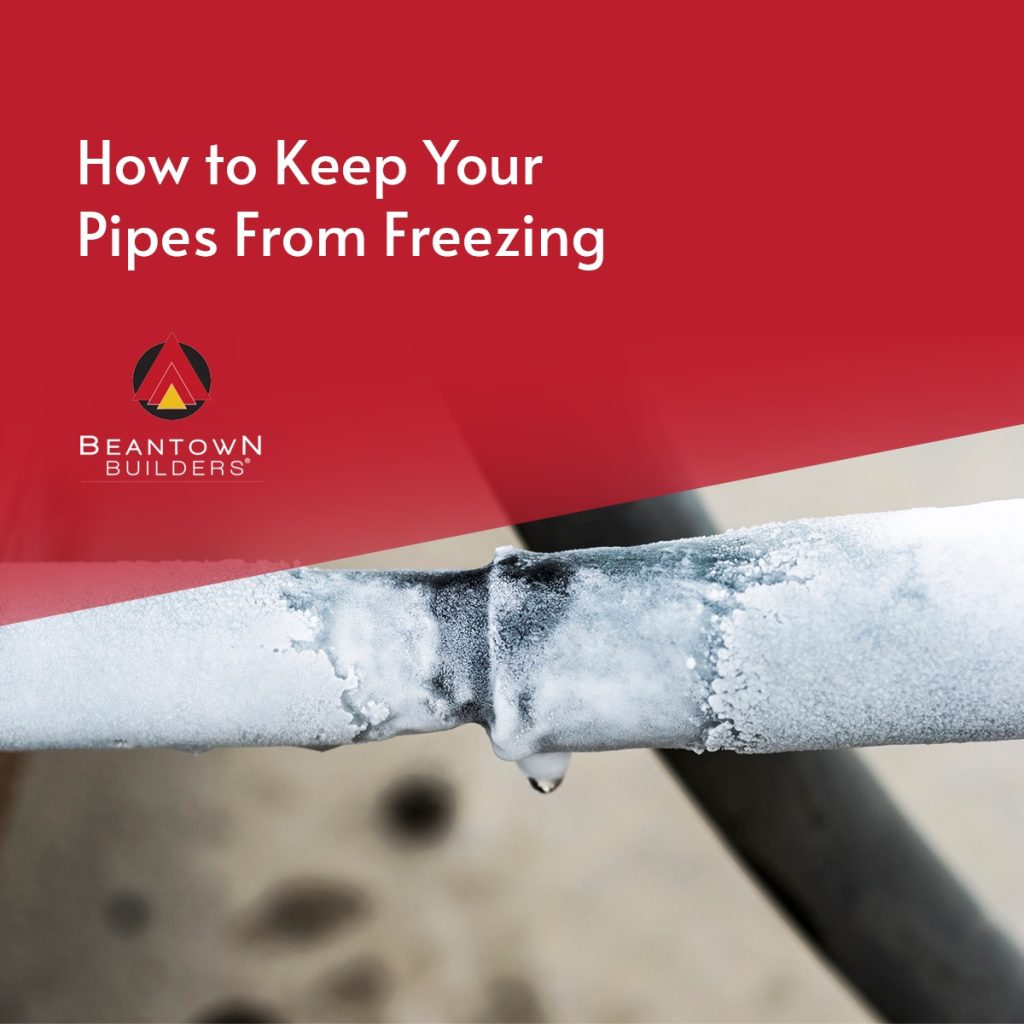As temperatures start dropping, the risk of your pipes freezing increases. As soon as you notice this decrease in temperature, it’s important to start taking measures to ensure your pipes stay warm and your water continues to run. When a pipe freezes, pressure is created inside it, which eventually causes it to burst.
When it bursts, this can lead to flooding in your house, especially if there is no one at home to shut off the water in time. Research has shown that burst pipes are one of the most common causes of property damage and can lead to thousands of dollars in water damage.
The three key causes of frozen pipes include poor insulation, thermostats that are set too low and sudden drops in temperature. Even though any pipe can freeze, the pipes most at risk are the ones in unheated interior spaces like garages, basements or attics.
Fortunately, you can do a few things at home to help keep your pipes from freezing and ensure your house stays dry. The best way to prevent pipes from freezing is to ensure they stay adequately warm and above their freezing point. Here’s how to keep pipes from freezing and bursting:
1. Leave Your Water Trickling
One way of preventing a frozen pipe is to drip cold or hot water. By opening the faucet and allowing water to run or drip through a pipe, you relieve the pressure in the pipe and system. Because this pressure between the faucet and an ice blockage can lead to pipes bursting, keeping the faucet open can prevent this from happening. When it’s a single-handle faucet, open the warm tap. If your faucet is served by both cold and hot water pipes, open both taps to keep water running.
How much water should you drip to keep the pipes from freezing? In many cases, even just a trickle of water will be all that is needed to keep the water from standing still and the pipes from freezing. Leaving the water trickling is even more useful when the water is from an outside faucet and the temperatures are especially low overnight.
2. Use Electrical Heat Tape
Another way of preventing frozen pipes is to use electrical heat tape. Electric heat tape or thermostatically controlled heat cables are wrapped around pipes. Heating tape can be viewed as an electric blanket for pipes. It provides the pipe with the necessary heat to ensure it stays warm enough in cold temperatures.
There are two different types of heating tape — manual and self-monitoring. With manual heating tape, you’ll plug it in when you need to heat a pipe and unplug it afterward. Self-monitoring tape, on the other hand, includes a sensor, which switches on whenever the pipe needs more heat.
Electrical heating tape can be applied to pipes outdoors or in interior spaces that do not have heating. It can also be a good solution for when you need to warm only a small section of a pipe that’s at high risk of freezing. The pipe, however, needs to be easy to access for tape installation and monitoring. Because these products can be dangerous, it’s important to only use products approved by independent testing organizations and only for the intended exterior and interior use.
3. Use Foam Insulation

To keep your pipes from freezing without heat, use foam insulation. When pipes are located in spaces without proper insulation like attics, basements or crawl spaces, they might need additional insulation to keep from freezing. By adding insulation to these spaces, you can maintain warmer temperatures.
Exposed pipes are usually the most at risk of freezing. However, any other pipes inside or outside the home could also benefit from extra insulation. Whenever you notice pipes freezing, regardless of their location, it could mean they don’t have proper insulation. Adding extra insulation could be the solution needed to keep your pipes from freezing.
You can choose from different types of pipe insulation depending on the number of joints or bends the pipes have and whether they serve cold or hot water. Rigid foam insulation consists of thicker pieces of insulation that easily gets slipped onto pipes, whereas wraparound insulation is better for pipes with more complex joints. The foam rubber used for insulation helps ensure the pipe stays close to the water temperature without adding any extra heat to the pipe.
However, this aspect also means that even though foam insulation helps with keeping the pipe at the same temperature as the water, it does not heat the pipe. There is still a possibility for the pipe to freeze if it gets exposed to extremely cold temperatures for a long period of time.
The more insulation you add, the more protected you will be against freezing pipes. Even properly installed insulation can still come undone or need repairing at some point. Because of this, it’s incredibly important to do regular checks to ensure the insulation is still in place and doing its job effectively. Overall, insulation can be a very cost-effective solution for exposed pipes — but whenever floors, walls or ceilings need to be opened up to insulate the pipes properly, this can become very expensive.
In addition to adding insulation to the pipes, you can also add additional insulation to your ceilings and walls to ensure the pipes stay warm. Sealing any openings or cracks by doors, windows or sill plates also helps by keeping the temperature higher and preventing the pipes from freezing.
4. Install a Permanent Heater
Try installing a permanent heater to keep your pipes warm. If you know you’re going to be away from home for a long period during the cold season, consider leaving the heat on at home while you’re away. Although this might cause you to worry about the extra costs of utility bills, it will still be cheaper than coming back to a flooded home due to a burst pipe.
It’s not necessary to keep the heat as high as you would when you’re home, but experts recommend keeping the temperature at 55° F while you’re away. This temperature will provide enough warmth to prevent any pipes in your home from freezing and bursting.
Call Beantown Builders for Help With Burst Pipes
It’s crucial to keep your home’s pipes warm as temperatures start decreasing to prevent your pipes from bursting and flooding your house. However, if that unfortunate situation has already occurred, contact us today by calling us at 617-291-8501 or filling out our online form to learn more about our expert flood restoration services and other solutions.


